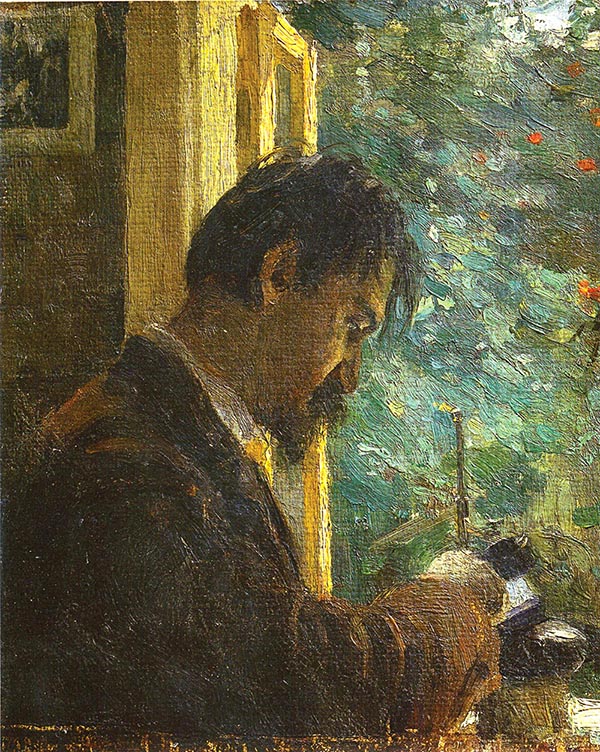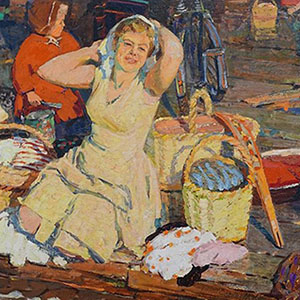An exhibition "Alexey and Andreas Javlenskie: The Adventures of Color" was opened in the Russian Museum

The Art Newspaper Russia
The new project collected 60 canvases, approximately equally from the father and son, Alexei and Andreas Jawlensky, from the Archives of Alexei Yavlensky (Switzerland), as well as from private Russian and foreign collections. There was an exhibition about how his son remained in the shadow of the famous father.
Researchers creativity Yavlensky senior divided it into periods. We skip studying at Ilya Repin in St. Petersburg and at Anton Ashba in Munich, where he met Vasily Kandinsky. The period of figurative expressionism in his work lasted from 1905 to 1913. Later Yavlensky designated him as a work with a color, "very bright, torturing", and depicting figures, "unrealistic and intangible." He called the colors: red, blue, orange, cadmium yellow, green chromium oxide. Pictures of the time made Yavlensky famous, but did not bring him material prosperity. To this period is the double portrait "Andrey and Katya", depicting the son of the artist and the daughter of Dmitry Kardovsky, with whom Yavlensky studied with Ashba. Comparison of the picture with photographs of that time confirms the "unrealistic" painting. In the landscape "Factory" - a rare combination of scarlet pipe and dark blue mountains against the crimson sky. In the "Mountain scenery with houses" modest yellow buildings "bow" to the blue peaks. From 1914 to 1937, the master was busy creating large series of canvases going almost consistently: "Variations on the landscape theme", "Mystic heads", "Faces of the Savior" and "Meditation". In the landscape series stands out "Variations: Spring - Twilight" with all the shades of blue and blue. From the "Mystic Heads" - "John the Baptist". In the remaining series, Jawlensky confidently moved to abstract expressionism through the picture "Meditation: the first fog tells the bassoon" to the abstract "Great meditation: after the storm."
Andreas Neznakomoff-Yavlensky (1902-1984) was born to Elena Neznakomova, the housekeeper of Marianna Verevkina, the companion of the life of Yavlensky the elder. At first the artist called his own son a nephew, but he always cared for him in a fatherly way. At five years old, the boy in the picture distorted the image of the chair so that flowering poppies could be seen. "You will be an artist," the parent predicted. After the talent of the boy noted Franz Mark and Ferdinand Hodler. At the age of 12, of course with the help of the Pope, Andreas is a participant in the large Baltic exhibition in Malmö. At the age of 18 - an exponent of the Russian pavilion at the 12th Venice Biennale. In the 1920s, he was often exhibited, but sold poorly, which forced him to draw advertising posters. When the war began, Andreas, who knew the Russian language, was sent to the Eastern Front as an interpreter, and from 1945 to 1955 he was in Soviet captivity. After his release he settled in Switzerland, returned to painting, sometimes exhibited, his paintings were bought by American and German collectors. But figurative expressionism, which selflessly served and Yavlensky senior, looked after the Second World War deeply archaic. Therefore, the early works of "Rebuke", "Portrait of Mr. Baur", "Mama" and especially "Wolf", although similar to the works of his father, look much more interesting than late geraniums, dahlias, sunsets, storms and night city landscapes.
State Russian Museum, St. Petersburg
"Alexey and Andreas Javlensky.The Adventures of Color"
22 February - 29 April 2018
News of the day




